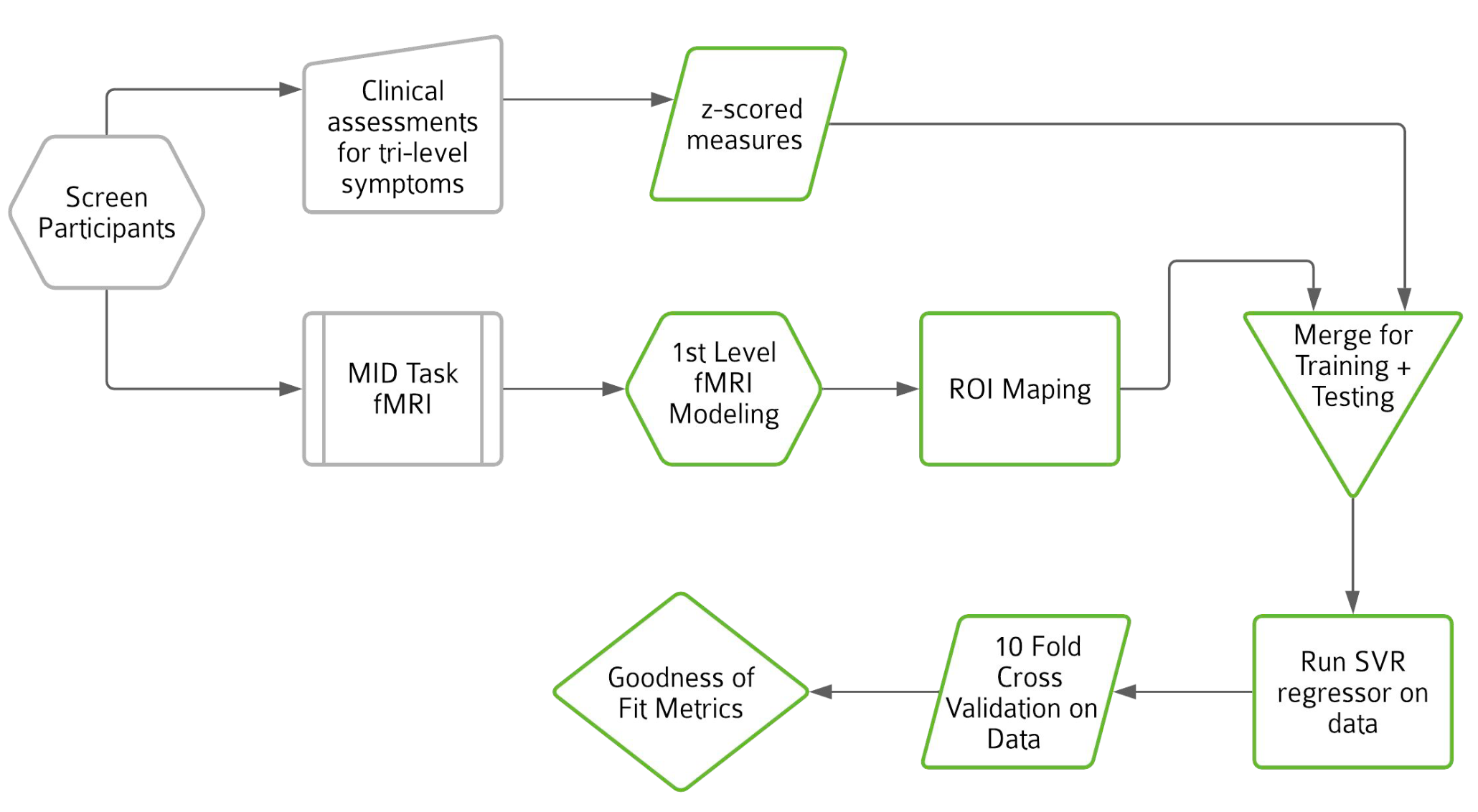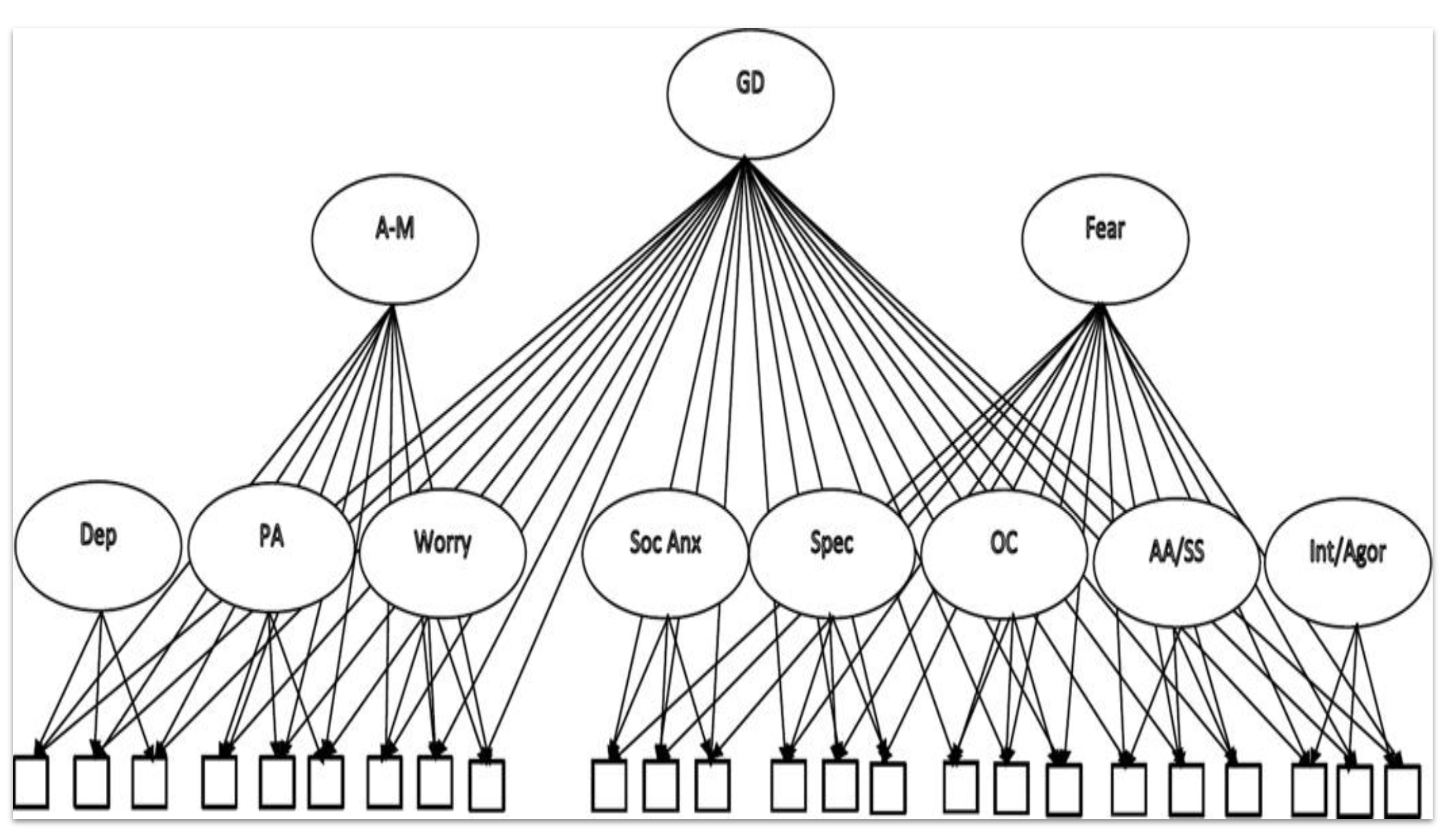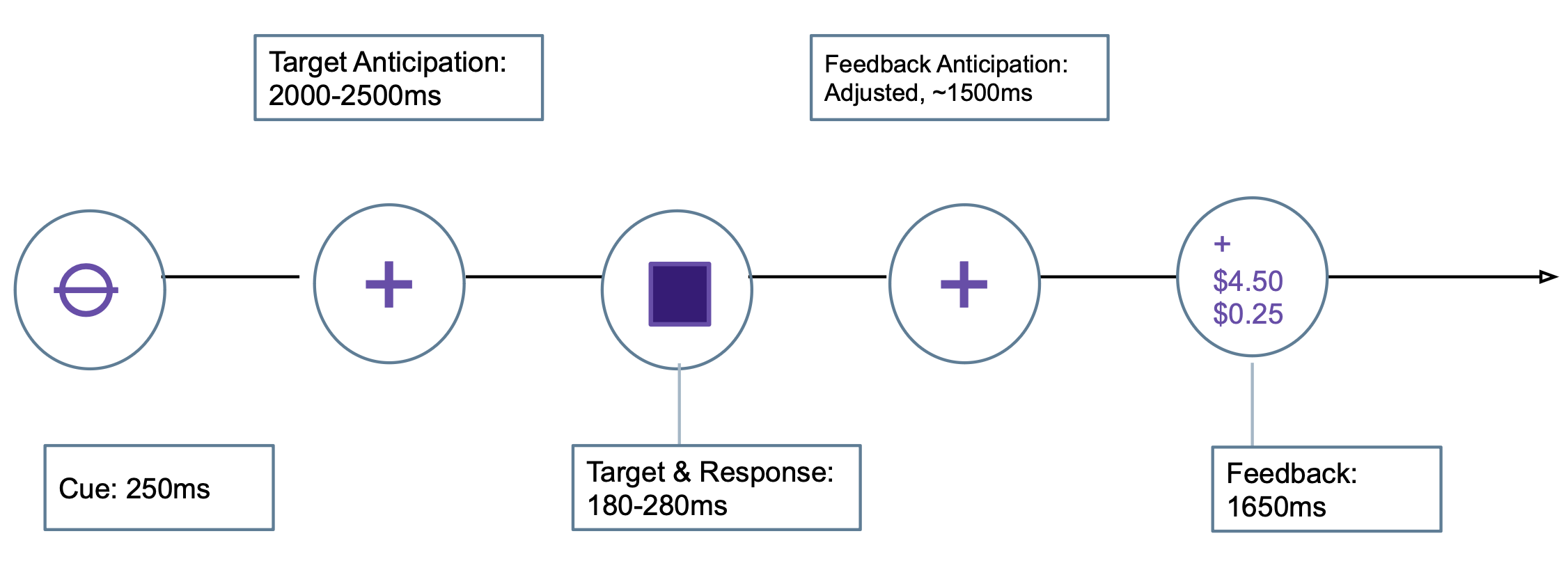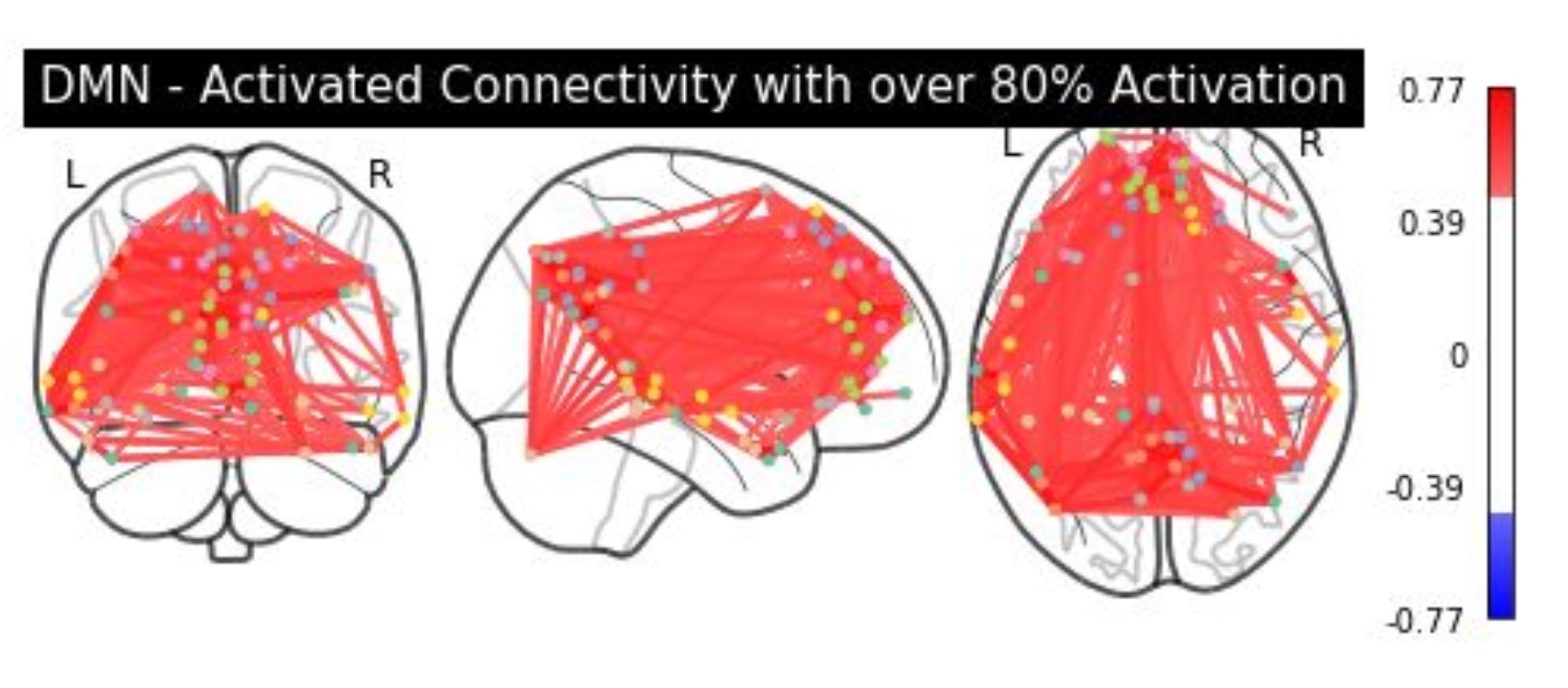Predicting Dimensional Symptoms of Psychopathology from Task-Based fMRI using Support Vector Regression
This study develops a novel machine learning approach using Support Vector Regression (SVR) to explore potential biomarkers in fMRI data for symptoms of anxiety and depression, finding that MID task-fMRI data does not accurately predict these symptoms, with results indicating a poor model fit.
Abstract
Extensive research in psychiatry has highlighted the potential utility of machine learning (ML) automation for disease diagnosis. For many years, studies aimed at uncovering biomarkers for traditional DSM diagnostic categories of mood disorders, such as Major Depressive Disorder, have presented challenges for many researchers. Machine learning models have been successfully applied in the context of disease diagnosis and prediction for treatment prognosis, using both structural and functional neuroimaging data. Due to its computational complexity, which does not depend on input space dimensionality, Support Vector Regression (SVR) provides a supplementary approach for studying whole-brain data, providing a data- driven perspective with sensitivity to relatively small effect sizes and increased reliability offered by multivariate analytic techniques. However, few studies have examined the relationship between brain activation features from task-based functional Magnetic Resonance Imaging (fMRI) data and symptom dimensions of anxiety and depression. In this study, we develop a novel application of feature-based type of supervised machine learning, SVR, approach to detect potential biomarkers in fMRI data and dimensional symptoms of anxiety and depression on 209 subjects enrolled in the study for risk for anxiety and depression. We trained the SVR classifier on fMRI data collected during the well-established Monetary Incentive Delay (MID) task, which is a widely used task to measure neural activity in response to reward and loss in healthy and clinical populations. The MID datasets were preprocessed into multi-dimensional feature space using a 264 regions of interest (ROI) mask, and the model was fit using ten fold cross validation on all 264 dimensions in order to identify patterns of activation associated with dimensional symptoms of depression and anxiety. We demonstrate MID task-fMRI data is not an accurate predictor of dimensional clinical symptoms. The results predicted dimensional symptoms with R2 values ranging from -0.269 to -0.658 indicating poor model fit compared to a horizontal line fit denoting a null effect. The poor model fit of linear models reported in this study suggests that a non-reliable linear relationship between reward-related neural activation and dimensional clinical symptoms related to the experience of depression and anxiety. Future analysis will explor additional non-linear modeling methods and clustering to further explore the relationship between reward-related brain activation and dimensional symptoms.
Project Workflow

Tri-Level Model: General Distress, Fear, Anhedonia as Predictors

Monetary Incentive Delay Task

Results: Model Fit and Errors

Underfitting: Due to the high dimensionality of the data, noise and unrelated brain activation, model is underfitting.

R2 values range from -4.24 to -0.65 for whole brain tests and slightly improve with fewer dimensions, -1.69 to -0.46 for only one feature deduced from the best p-value correlation across all ROIs.
Conclusions: Poor Model Fit

Goodness of Fit Evaluations: The negative R2 values out of regular R2 bounds (1.0-0.0) imply that a horizontal line (mean) performs better at predicting the y values than the SVR model's fitted line. Also, high RMSE values show poor prediction of response.
Where do we go from here?..

Non-linear Methods: Future analysis could alternatively explore additional non-linear modeling methods, like clustering, to further explore the relationship between reward-related brain activation and dimensional symptoms.